Five-gallon buckets are very handy things for a gardener to have. There are so many uses for these cheap (often free) and reusable resources.
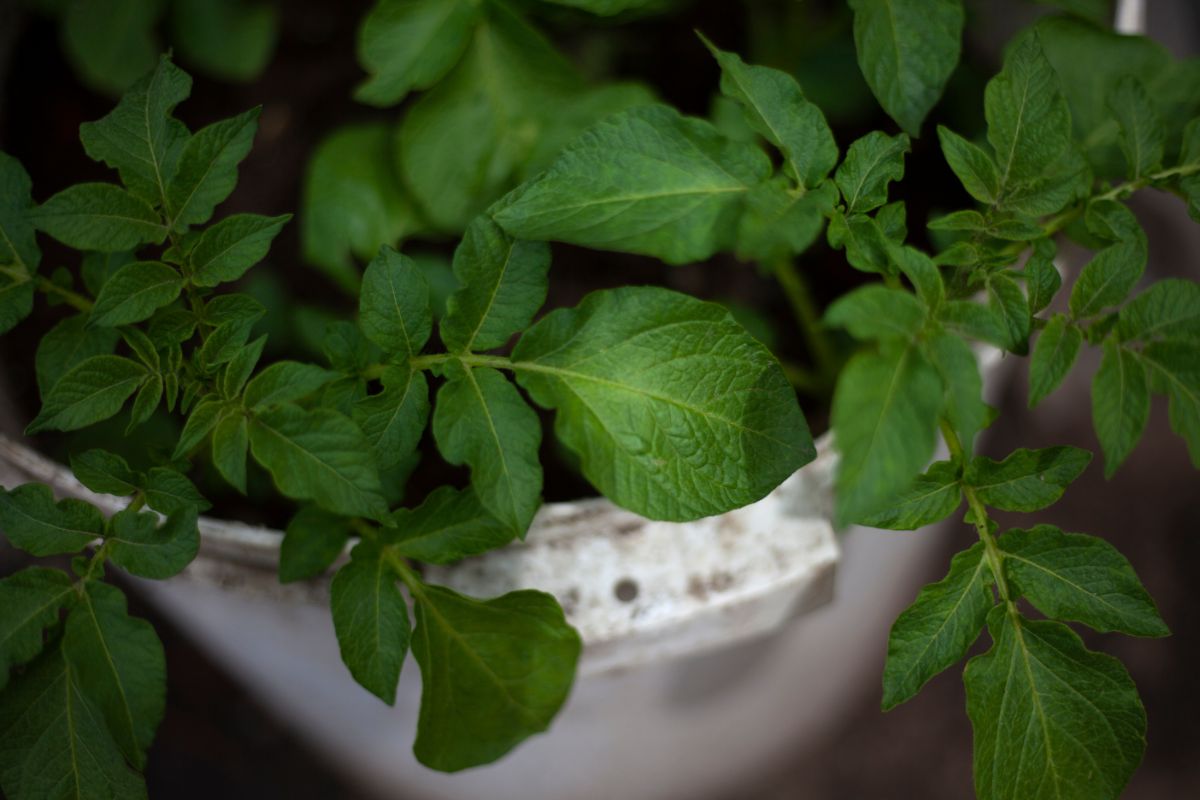
Read on for ways to put plastic pails to work in your garden. (And don’t miss the last section for tips on how and where to find up-cyclable, recyclable buckets for free!)
There are some obvious uses that make this list, but there are more than a few that you probably have never considered. See what strikes your fancy and start collecting those buckets! With this many uses, you’re going to need quite a few.
Jump to:
- 1. Container Planters
- 2. “Topsy-Turvy” Style Hanging Planters
- 3. Tool Caddy/Carrier
- 4. Tool Storage and Cleaning
- 5. All Around Garden Tote
- 6. Garden Stool
- 7. Rock Collector
- 8. Weed Trug
- 9. Compost Tea-Maker
- 10. Harvesting Basket
- 11. Produce Wash Station
- 12. Bulk Fridge or Freezer Storage
- 13. Winemaking and Fermentation Crocks
- 14. Fertilizer, Spray, and Amendment Storage
- 15. Store Winter Bulbs and More
- 16. Scrap Bucket
- 17. Composter
- 18. In-Ground Worm Composter
- 19. Rainwater Collector
- How to Get Five-Gallon Buckets for Free
- Their Burden, Your Benefit
- A Bucket Good Enough for the Garden
- Food Grade or Not Food Grade?
1. Container Planters
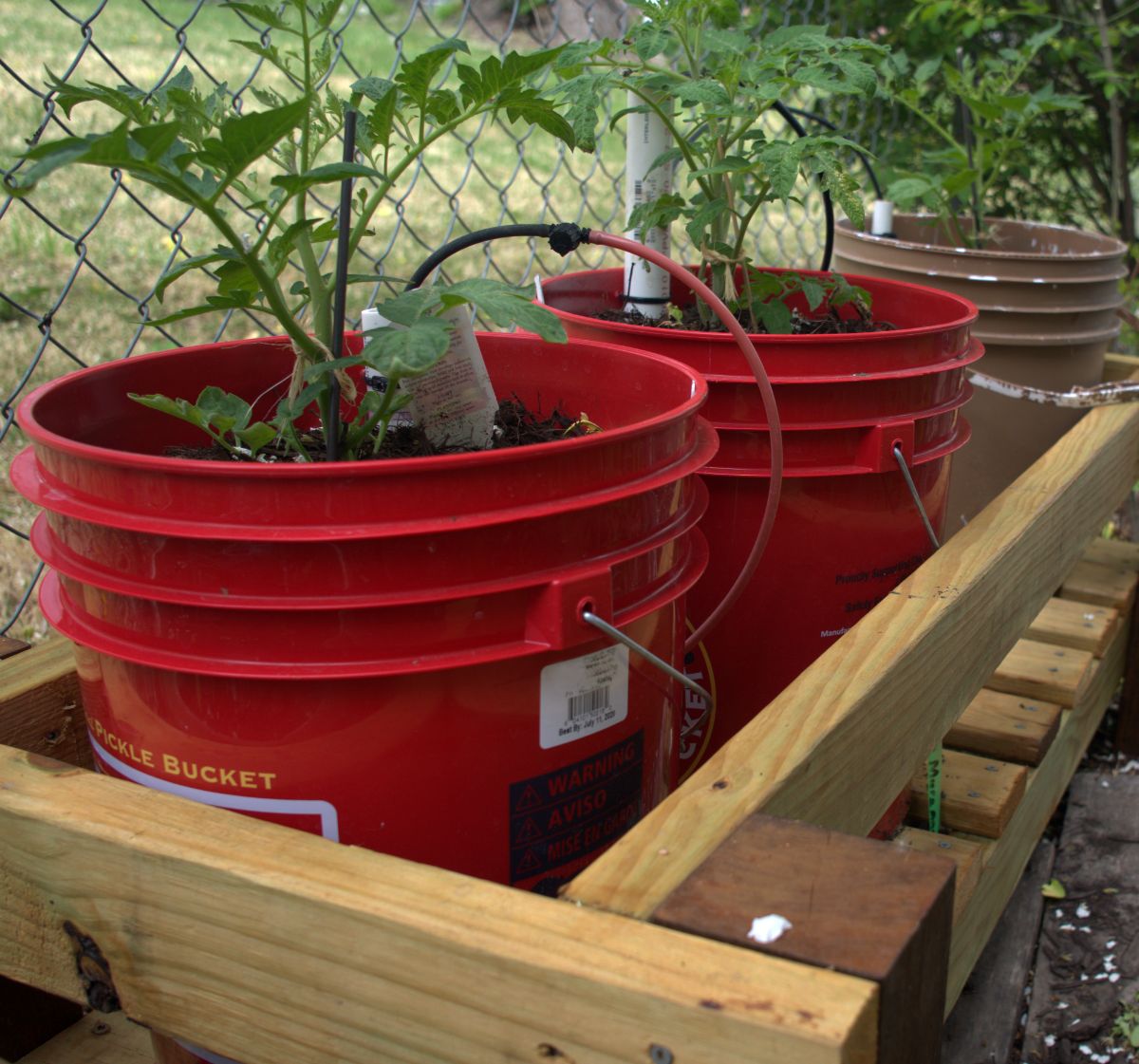
Five-gallon pails hold a lot of soil. They are large enough to grow some of the biggest garden plants and vegetables. Many things can be grown in five-gallon buckets, including strawberries (make a whole grow tower out of a 5-gallon pail!), potatoes, cucumbers, squash, lettuce, tomatoes, herbs, broccoli, cauliflower, kale, and roots crops like carrots and beets.
For larger and taller plants, it’s smart to set buckets into a frame or anchor them so that they cannot tip or blow over. These can be simple structures, raised (which is nice if bending is no longer your friend), tiered, or on the ground. There are many examples online and on YouTube for 5-gallon bucket planting frames.
For all plants, be sure to drill some holes in the bottom for drainage (four to six one-half inch holes will suffice).
As with all container planting, plants in buckets dry out faster than plants in the ground, so be sure to water regularly.
2. “Topsy-Turvy” Style Hanging Planters
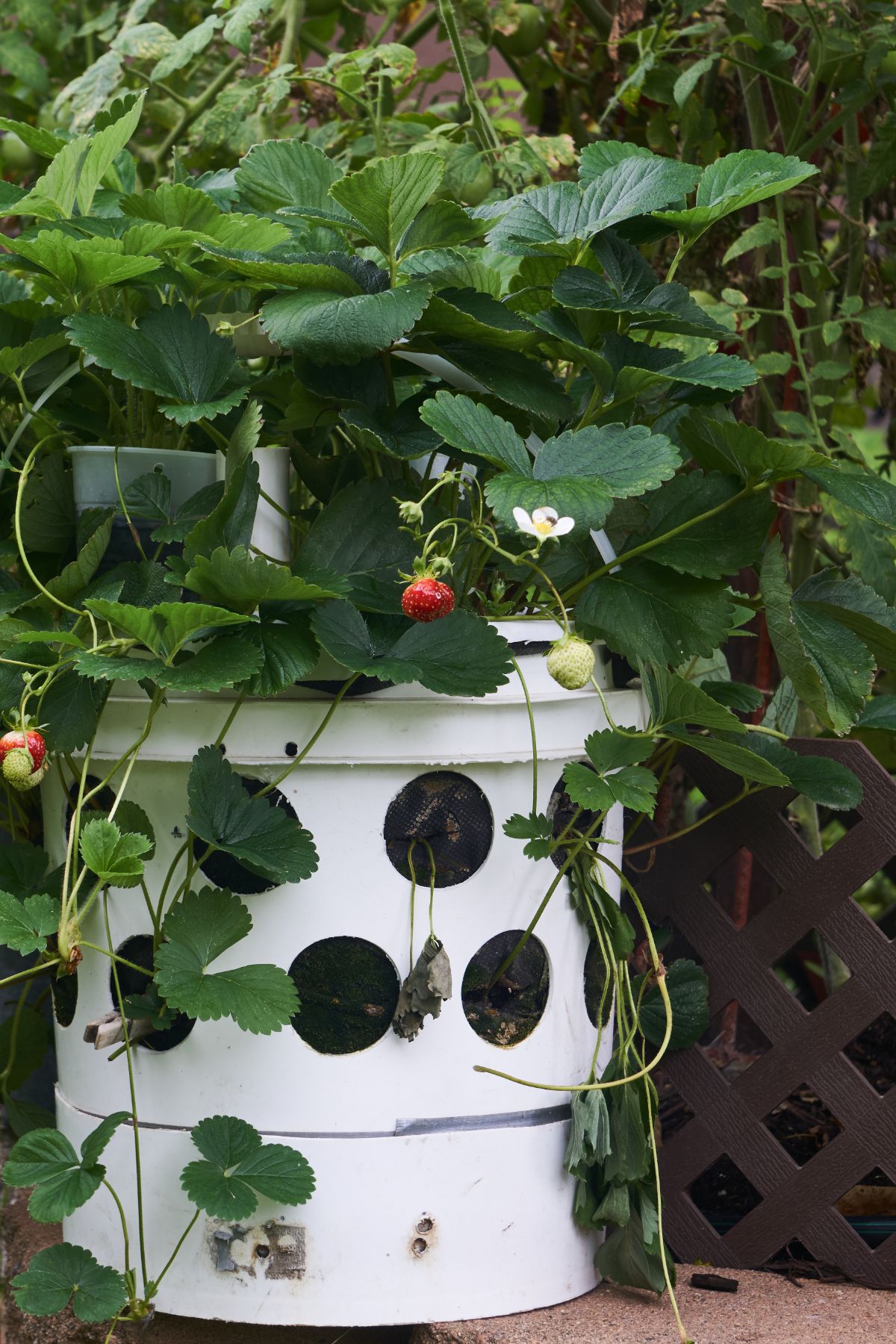
Similar to the above, you can use five-gallon buckets to make your own “topsy-turvy” style planters. “Topsy-Turvy” planters are bags or containers in which you plant the plant (tomatoes are popular) upside-down first, and then fill with soil. (You’ll need to drill or cut a larger-diameter hole of about three inches in the bottom of the bucket for planting.)
The best part about this is that you can design your own planter to suit exactly the crop you are growing, and the space you have for hanging. For example, you can make an upside-down planter with holes in the sides of the bucket to grow a whole crop of strawberries or herbs in one bucket, planting-bag style.
Upside-down planters need to be hung and the handles on plastic buckets make them perfect for this.
3. Tool Caddy/Carrier
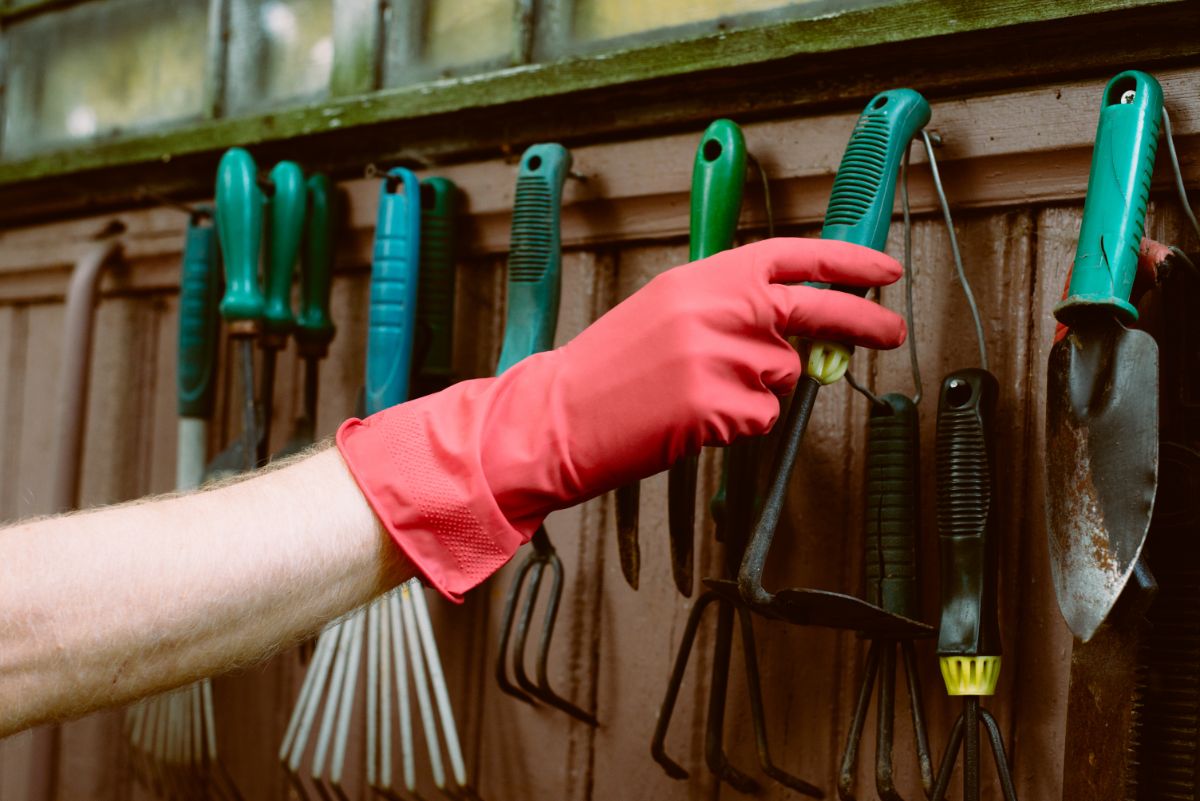
How many times have you been out in the garden and had to trudge back to the house or shed for that one tool you don’t have with you?
Save yourself some trips and make yourself a handy grab-n-go garden tool caddy out of a spare 5-gallon bucket. Keep all your trowels, weeding tools, planters, hammer, twine and string, markers and spare labels...anything you use often in the garden should go into your caddy.
For added ease and organization, buy an inexpensive bucket tool organizer (like what carpenters and contractors use). This will give you lots of pockets and places to fit different tools and supplies.
4. Tool Storage and Cleaning
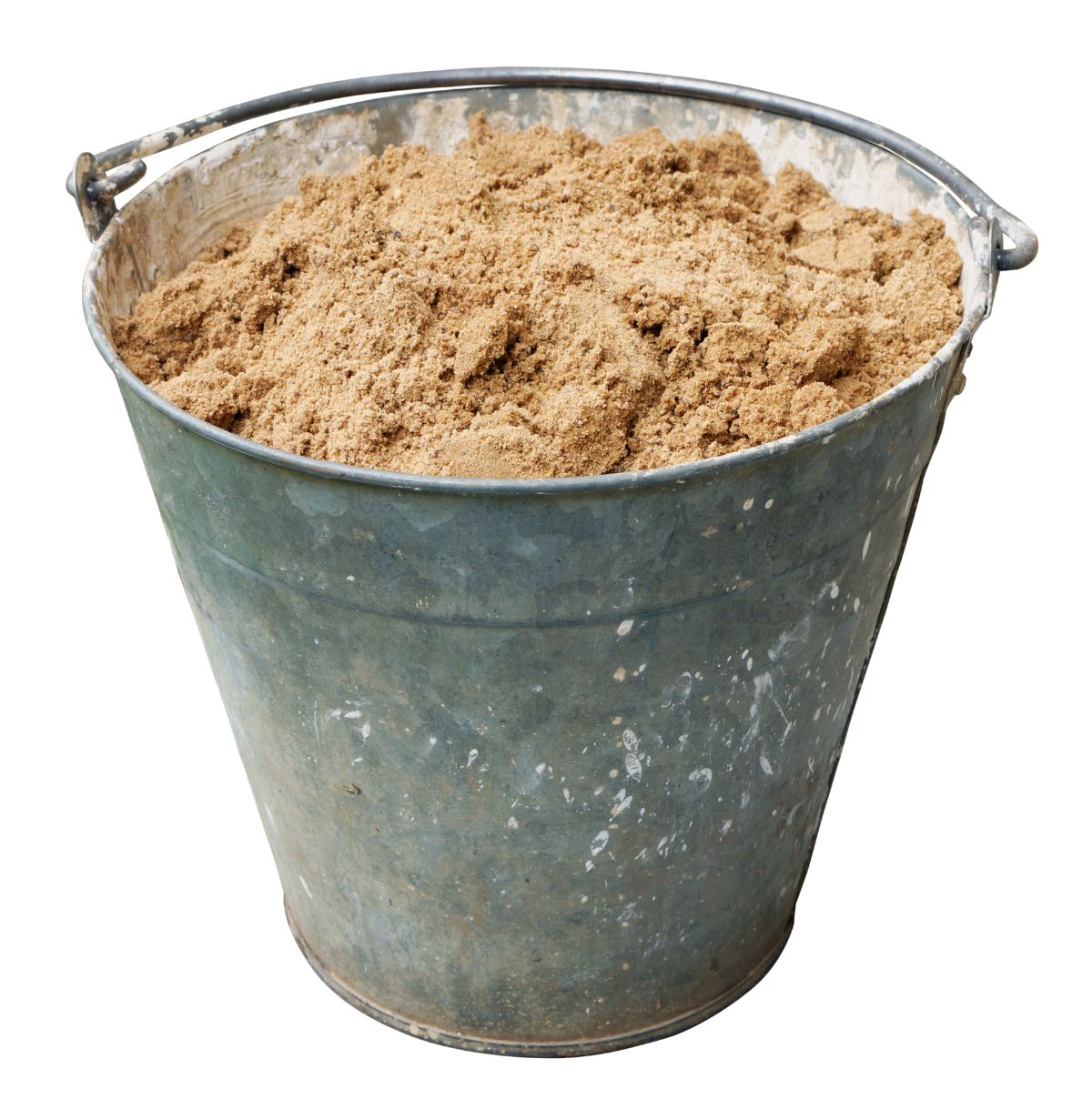
You can use a five-gallon bucket to make an all-in-one tool storage and cleaning container.
Just fill a bucket with sand. Mix in about one cup of vegetable oil. When you’re done using your tool, sink the business end into the oiled sand. The abrasive sand will help clean it while the oil helps to prevent rust and rot.
5. All Around Garden Tote
For all those things you need to carry back and forth and around the garden, five-gallon buckets make great totes. Keep one for seeds (you can even put moisture absorbers inside and seal the lid, then place it in a cool space for storing). Pack one for the day’s work...five-gallon buckets make great all-around garden totes.
6. Garden Stool
If you keep a lid on your tote, you have a ready-made stool. If you don’t, an overturned empty bucket will do the trick.
Bending is hard on a gardener’s back and gets harder as the years go on. A light, moveable, handy bucket makes an ideal garden stool. You can even buy swiveling foam seat lids to make them comfier!
7. Rock Collector
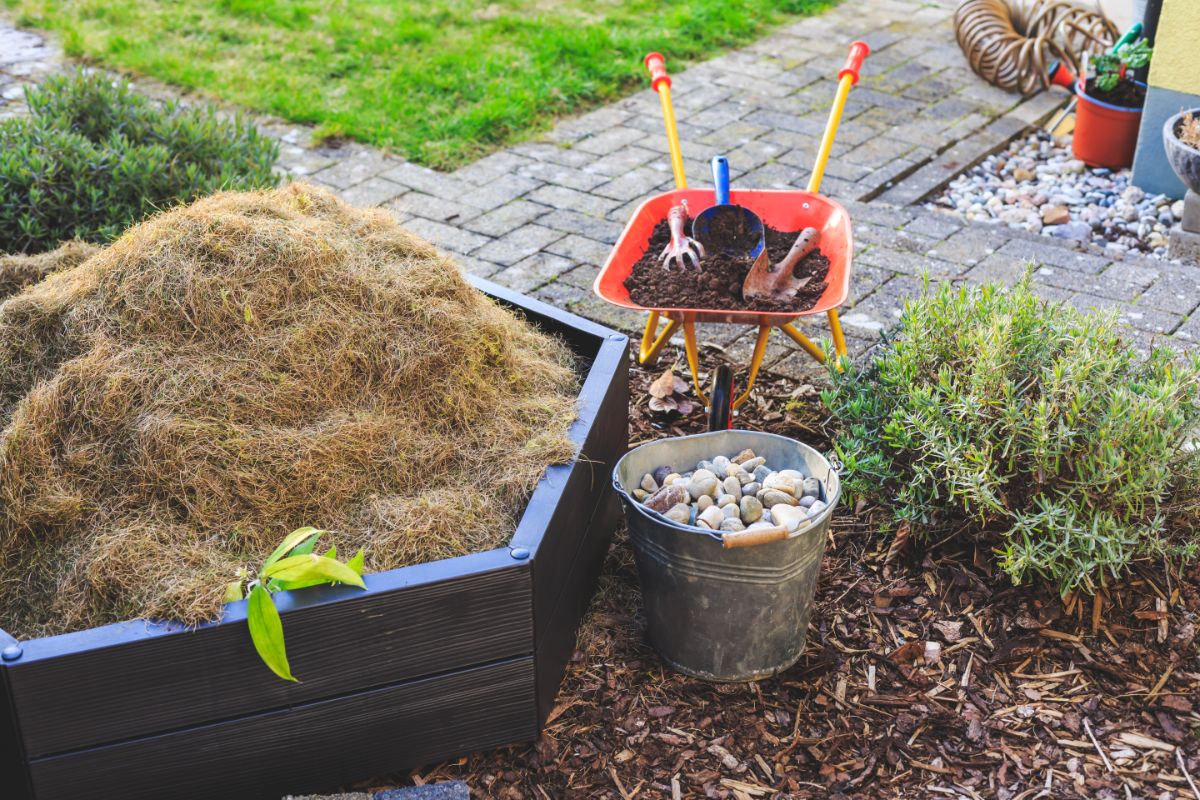
How many times have you been planting, working, or weeding the garden and come across yet another rock? With nowhere to put it, usually.
Keep a bucket with you as you work through your rows and toss the rocks inside. At the end of the day, dispose of them on a rock wall or over a banking (on your own property, of course). Or start collecting them to make a rock garden or garden path.
Having a bucket on hand makes it easier to get the rocks out without stopping what you’re doing.
8. Weed Trug
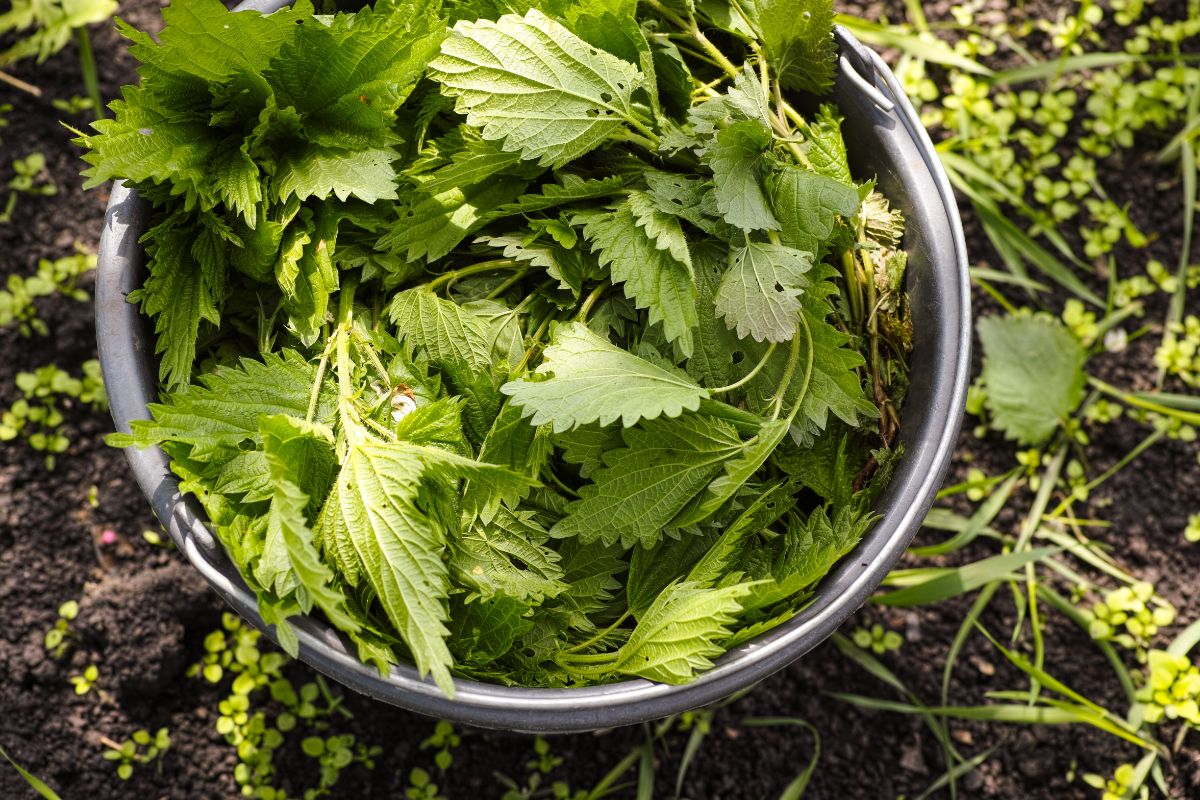
When you weed, it’s best to get pulled weeds right out of the garden. Weeds that are left in the aisles of gardens can re-root themselves if it’s moist enough. They hide and protect pests. They will also spread any pests or diseases that they might be harboring.
When you’re weeding, though, weeds can add up. And they can be a lot to go back and rake or collect. Simple solution: Use your five-gallon bucket as a trug.
Take a couple pails with you, throw weeds in as you go, and easily carry them to the compost pile with the built-in handles. Voila! Weed-free healthy garden!
9. Compost Tea-Maker
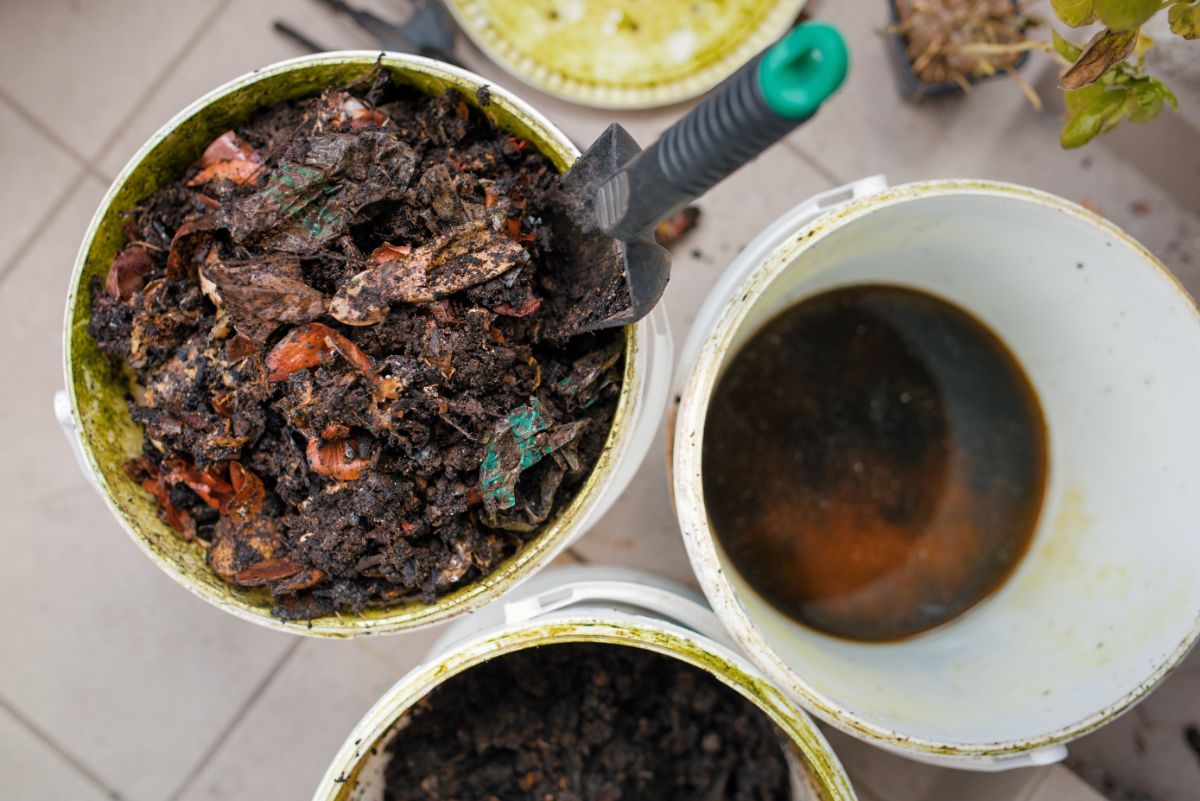
Manure and compost can be used to make excellent liquid fertilizers. Even “hot” manures that are too fresh to go directly on your garden can be used to make a fertilizer or compost tea that can be used to water and feed your plants.
Five-gallon buckets are perfect for this. They are manageable in size, have lids, and are cheap enough that you don’t have to worry about whether you can use them for anything else (besides poop water). They can even be fitted with a spigot, if you like.
10. Harvesting Basket
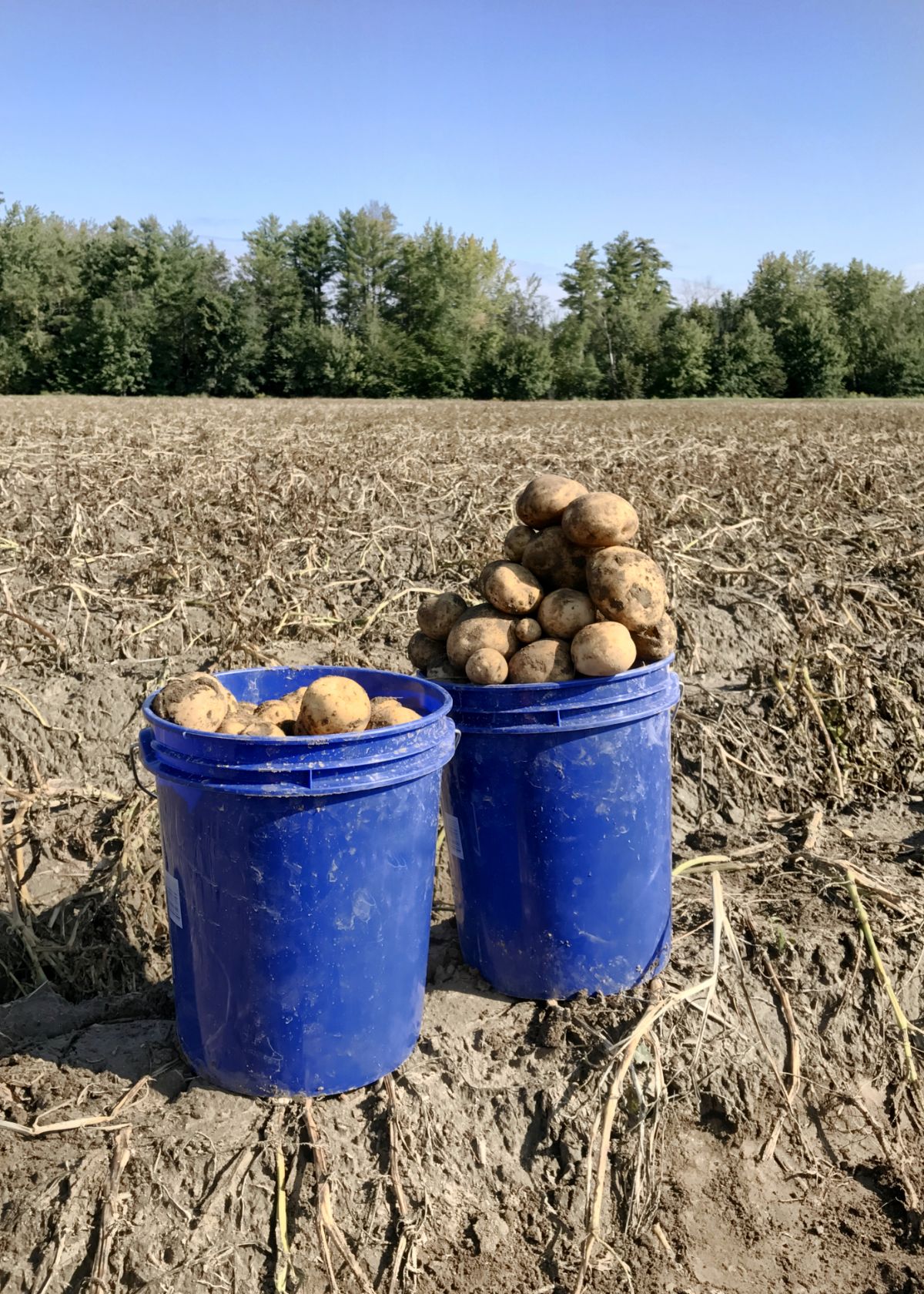
When the growing gets good, it seems there are never enough baskets or crates to go around. And both of those can be pricy to buy.
A simple solution? Use five-gallon buckets instead. With the tips below, you can gain an almost endless supply, and always have enough for everything.
If you don’t like harvesting into a solid bucket, drill a few quick half-inch holes around the bottom of the bucket. This will let soil and moisture run out.
11. Produce Wash Station
Make your own handy produce wash station using five-gallon buckets.
Drill several one-half to one-inch holes in the bottom of the bucket and several more along the sides of the bucket. You can pick right into these buckets or transfer into them.
When your produce comes up from the garden, spray the worst of the soil and dirt off them. The holes will let the water and dirt run out.
If you want to further wash or sanitize your food, use a smaller size bucket with holes (like a three- or four-gallon bucket) and a larger five-gallon bucket. Fill the large bucket with sanitizing or clean washing water (vinegar in water is cheap and a top-notch organic cleaner). Then sink the produce-filled smaller bucket in the water, let it sit for 15 minutes, and pull it out.
You’ll be able to reuse the cleaning water for as long as it is still clean enough. When done, dump it on a rock walk or somewhere away from good plants where you want to control weeds. The vinegar or cleaner will help. If clear water is used, it can be used for watering your plants.
12. Bulk Fridge or Freezer Storage
Sometimes we have an abundance of fruits or vegetables and not enough time to do anything with them. Many of these—fruits and berries especially—can be fresh-frozen and then pulled out later (when you have more time!) and made into something delicious like wine, jams, or jellies.
If you have the space in your freezer, and you have a use for that large bulk later, storing in food-grade plastic buckets of various sizes is a great way to keep up with the harvest and then process it into its final product later, when you have the time.
13. Winemaking and Fermentation Crocks

Five-gallon buckets make great vessels for easy homemade country wines.
They are ideal for the first fermentation phase. In a pinch, with some plastic wrap and a pin, they can even be used for secondary fermentation. No, home winemaking does not need to be hard, expensive, or take a lot of fancy, pricy winemaking equipment!
14. Fertilizer, Spray, and Amendment Storage
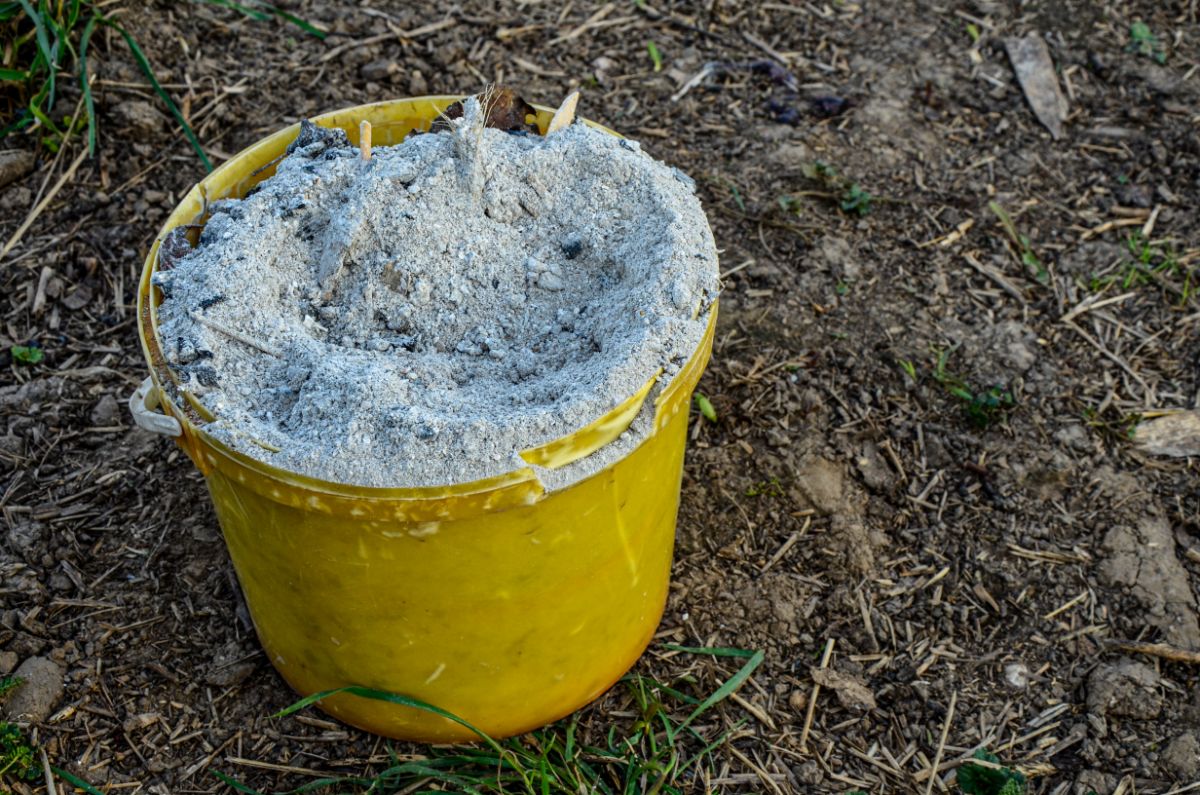
Use five-gallon buckets to mix large batches of things like neem oil, insect treatments, fungicides, fertilizers, amendments, homemade fertilizers or weed killer. Firmly fit them with their lids and keep the supplies on the ready.
Make sure all buckets are secured with a lid and that the buckets are clearly labelled with its contents. Keep out of reach of children and pets.
Alternatively, you can make yourself a garden caddy of treatments and amendments in small containers all together, ready to go and tackle what ails your plants.
Create a kind of garden first-aid kit with things like ready-to-use neem oil, handheld pruners, Epsom salt, insect repellant, diatomaceous earth, BT... whatever it is you like to use in your garden that you like to keep on hand. Top the bucket with a secured lid to keep it protected and away from kids and pets.
15. Store Winter Bulbs and More
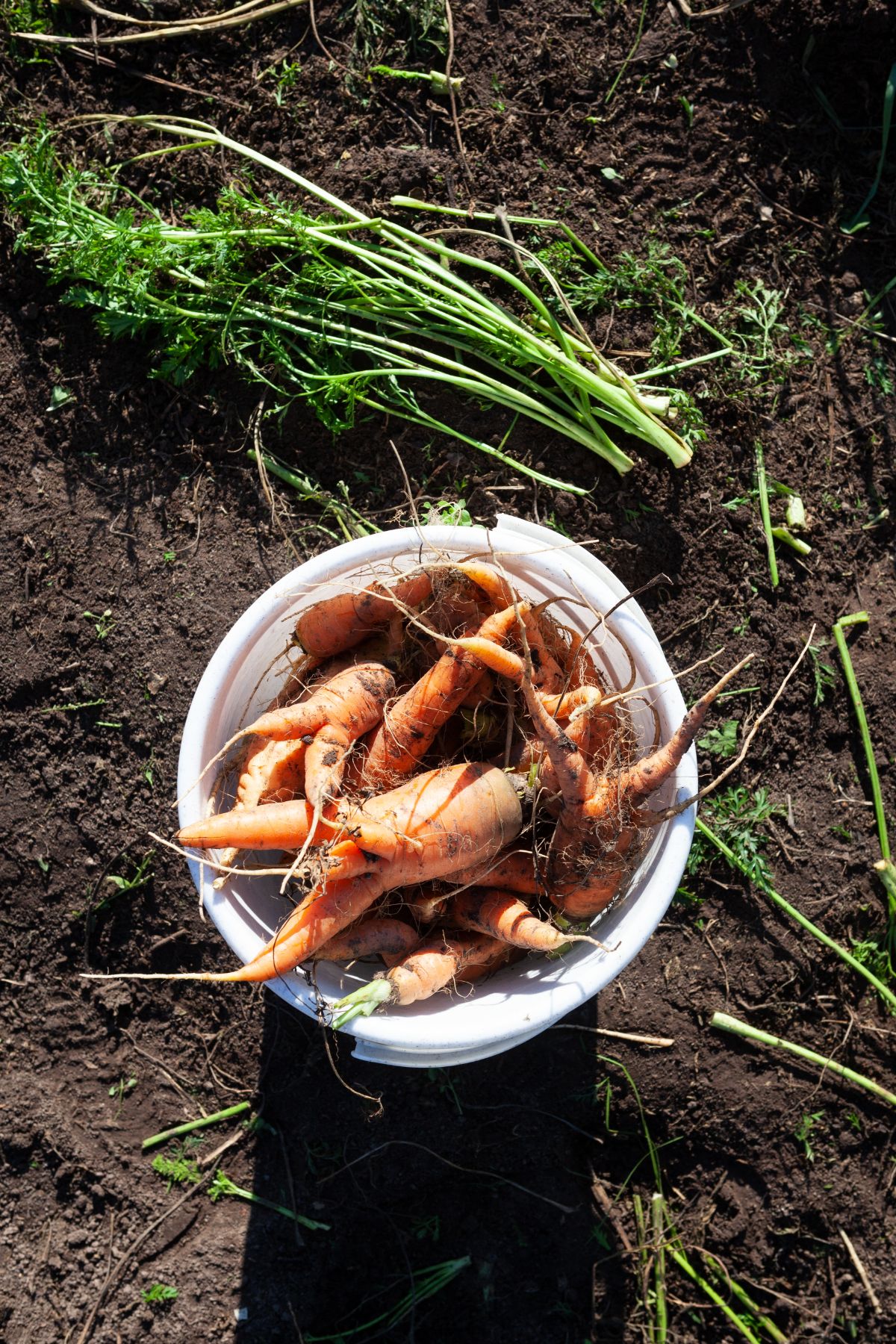
Five-gallon buckets can store all sorts of garden things.
Some suggestions?
Use them to store clean, dry root crops like carrots and beets, or other cold storage winter-storing produce like squash, onions, and garlic. Dried beans can be stored nicely in plastic buckets, too.
Store your tender bulbs and tubers like gladiolas and dahlias in clean shavings in buckets in a cool basement or root cellar.
Follow the storage instructions for the specific crop or produce you are storing. If ventilation holes are recommended, it’s easy to drill some holes in the sides or lids of buckets.
16. Scrap Bucket
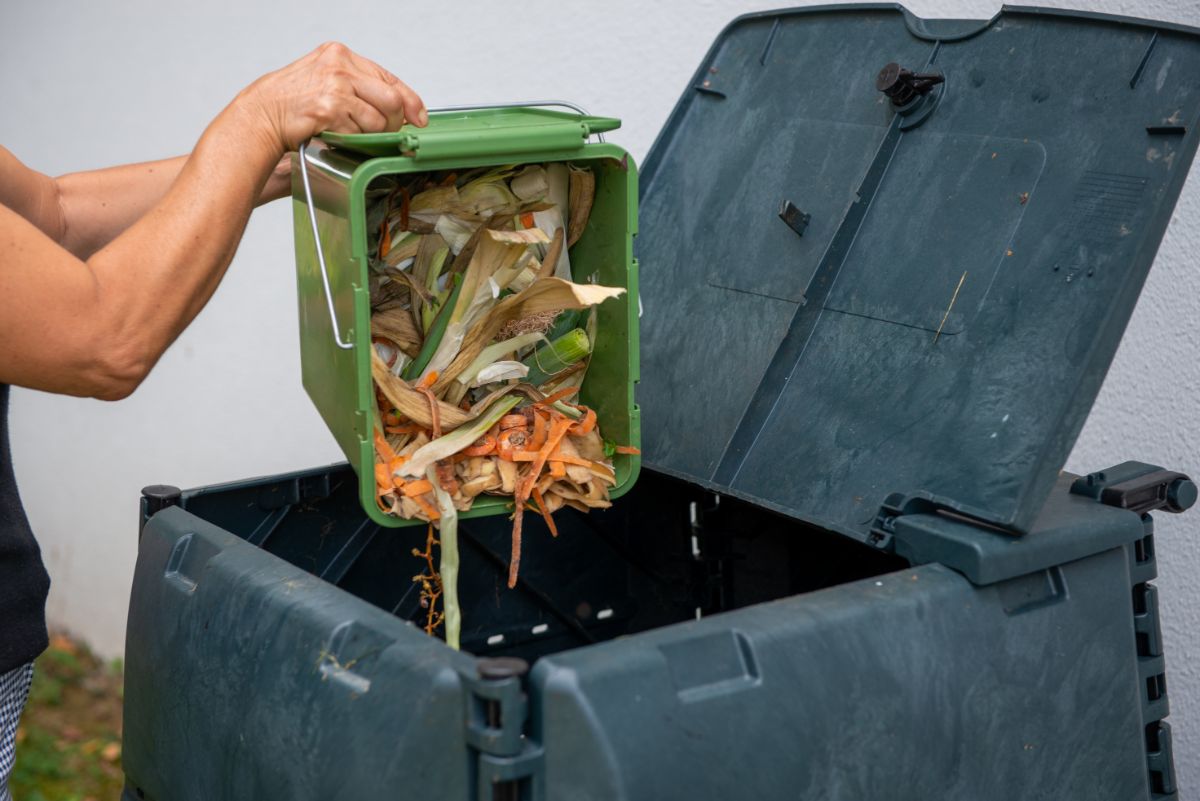
Keep a three- or five-gallon bucket in the house (maybe under the sink or in a garage) to use as a scrap bucket. Empty it regularly into your compost pile. Once again, this is where those lids come in handy!
17. Composter
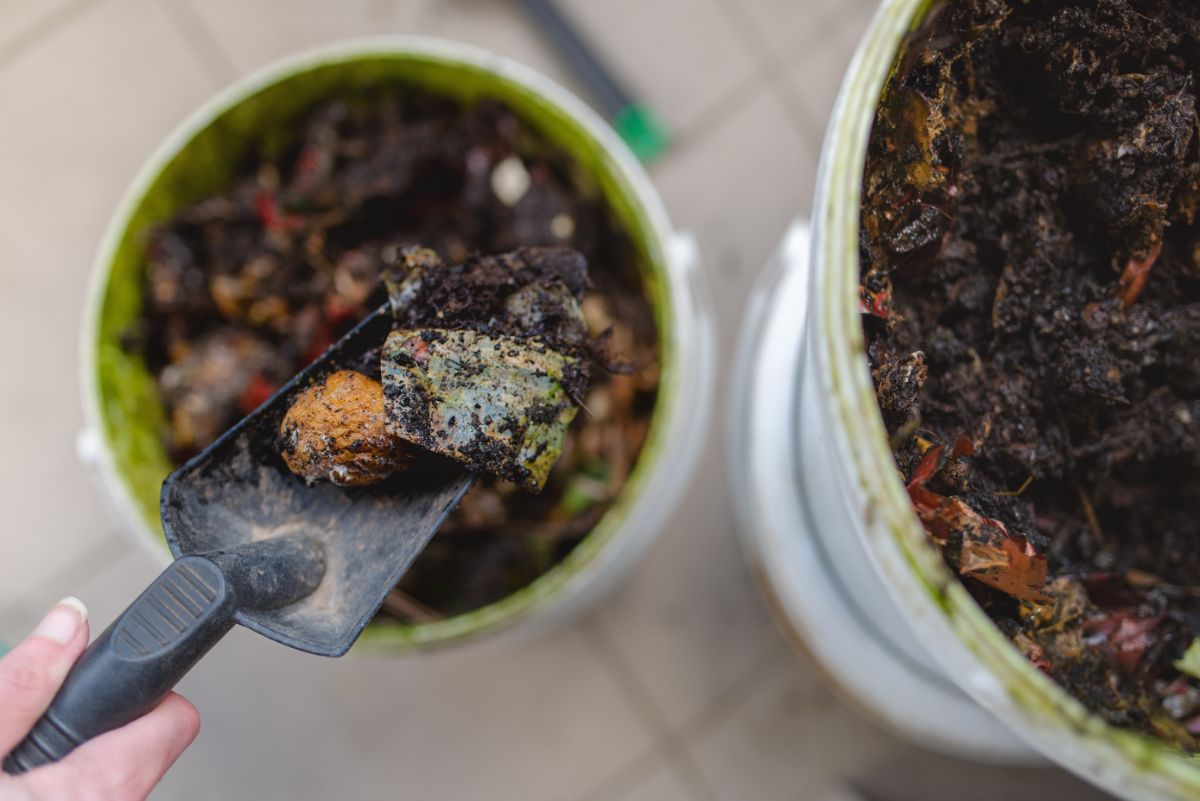
If you don’t have room outdoors for a compost pile, you can use five-gallon buckets to make indoor vermicomposting or Bokashi compost bins. These easy, fast, odorless indoor methods will turn your scraps right into rich compost your plants and garden will love.
You can also make an outdoor tumbler-style compost bin with large buckets.
There are, of course, paid versions of all of these compost bins that you can buy, but cheap or free five-gallon buckets will be much more affordable.
18. In-Ground Worm Composter
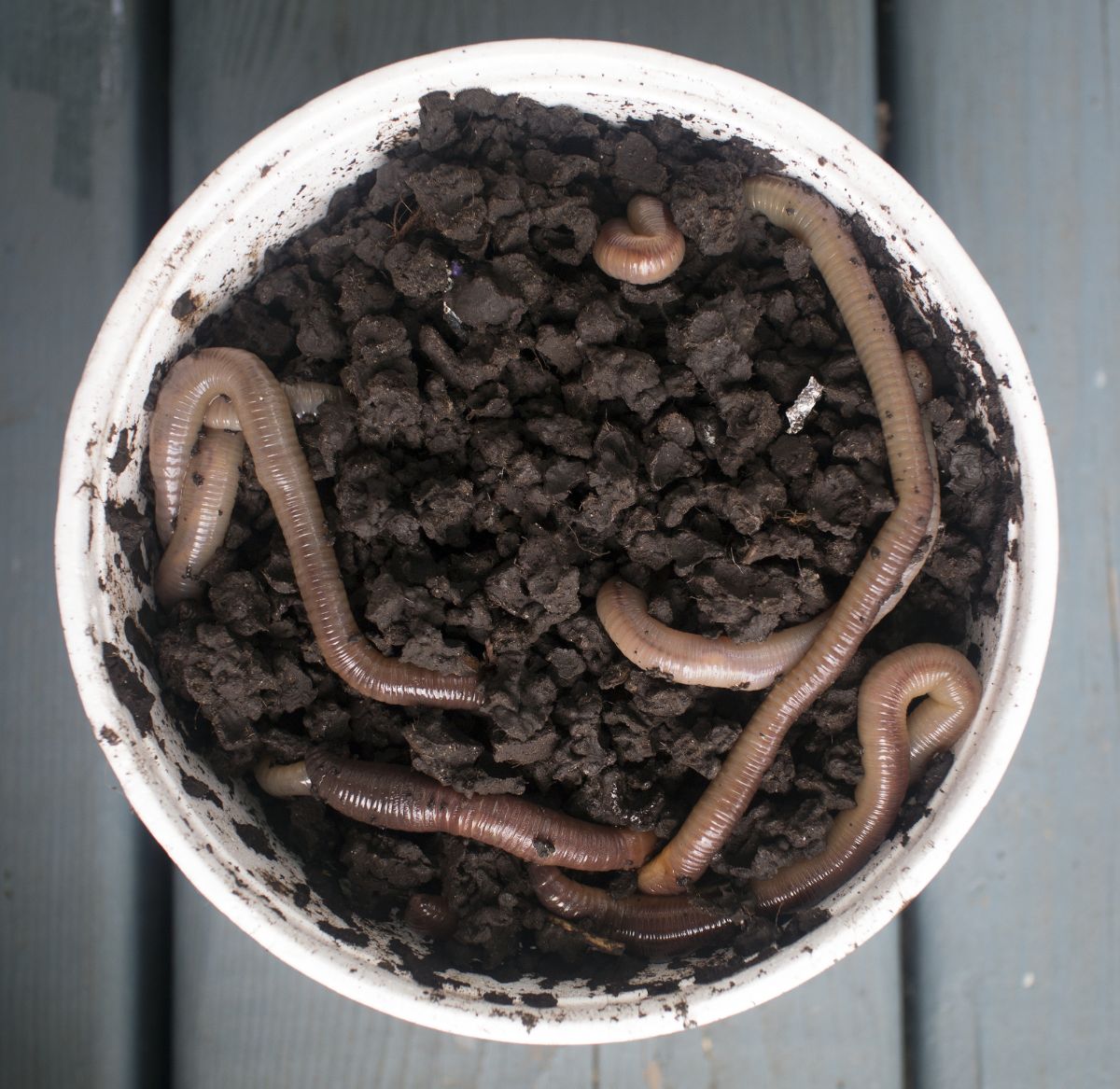
Another option is an in-ground compost bucket. These are just five-gallon buckets that you sink in the ground, fill with scraps and materials, and worms travel through. The worms come in and out through holes drilled in the sides and bottoms to work their magic.
With a free bucket and a drill, you can have a fast in-ground worm compost bin for nothing. With the lid at ground level, it’s easy to refill with your kitchen scraps.
19. Rainwater Collector
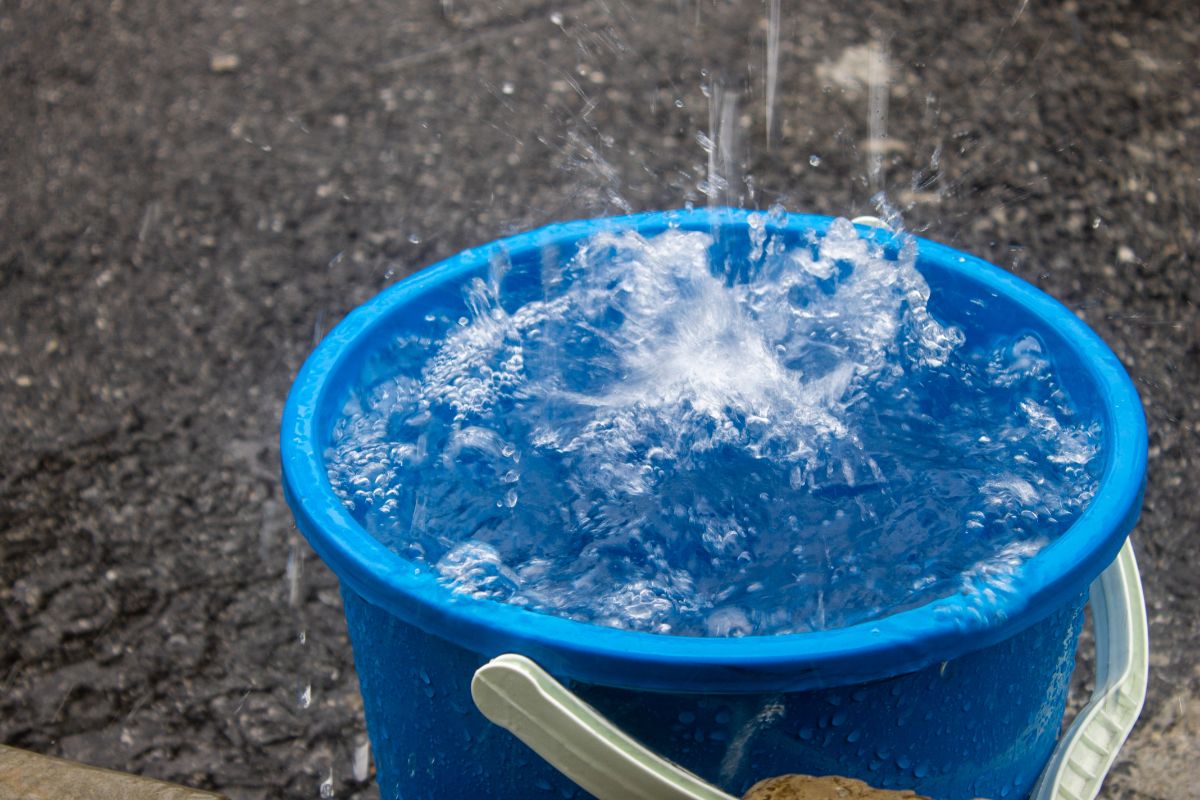
If you rely on a municipal water supply or live in an area where water use is restricted, collecting rainwater can reduce or eliminate your garden water costs and consumption.
Collecting rainwater is easy. You just need something in place to collect the water when it rains. Enter 5-gallon buckets.
Placing your receptacles under building drip edges, below gutter spouts, or where the eaves meet and run off on a building will help increase the amount you collect.
If you find buckets difficult to carry for long distances, strategically place the buckets around in your garden near to where you need to use the water. If you’re afraid of them blowing away when not in use, put a rock in the bottom to weight them.
If you can’t carry buckets full of water, just keep a small pan as a dipper around for the watering.
One problem with collecting rainwater is that if you have more than you will use in a short period of time, it becomes a haven for mosquitoes and other water-borne pests. If you have lids for your buckets, pop them on when they are full to limit mosquito breeding grounds.
How to Get Five-Gallon Buckets for Free
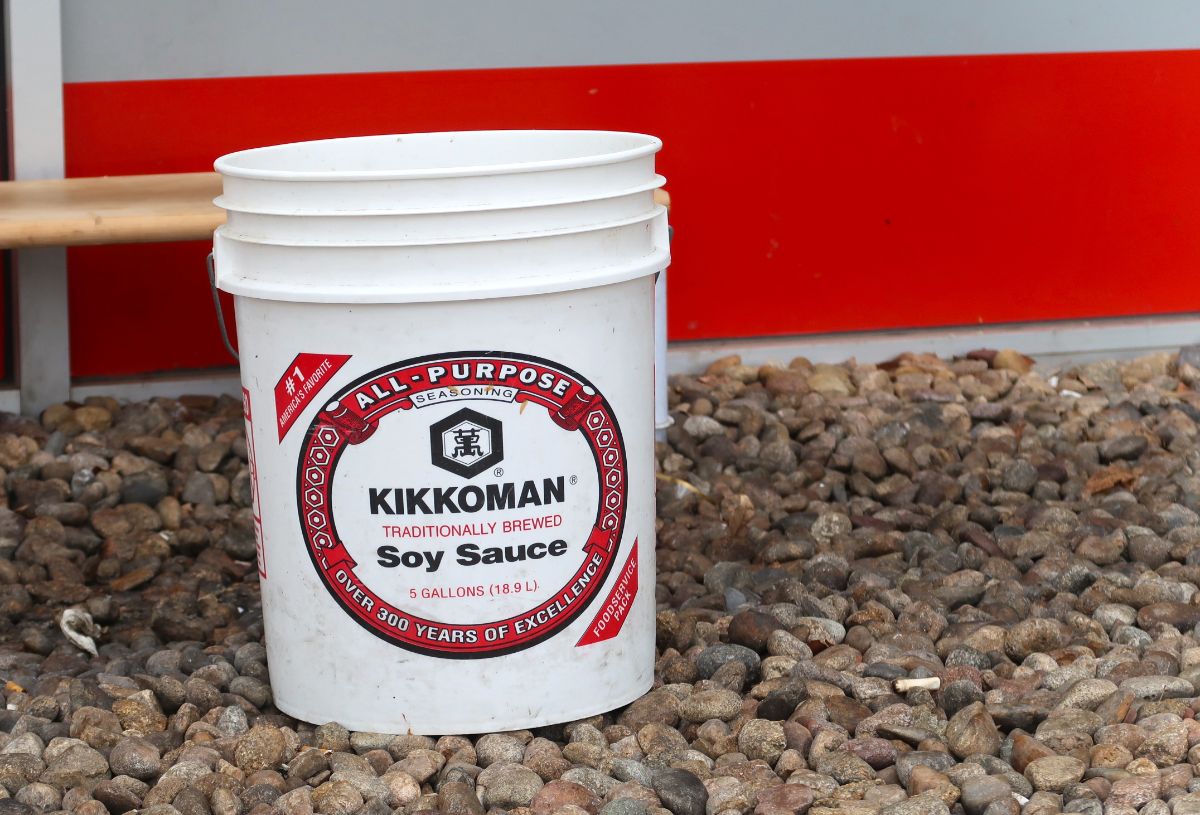
Businesses, especially food establishments like restaurants, bakeries, and catering businesses, get a lot of their bulk supplies in—you guessed it—plastic buckets. All manner of supplies come in large plastic pails. Things like frostings and fillings, pickles, powders, and cleaning agents.
Other professions frequently use products that come in five-gallon buckets, too. For example, contractors and carpenters that buy in large bulk may be getting things like joint compound and paint in large buckets. Custodians and cleaners may get cleaning solutions in them.
Businesses get food and supplies in buckets of all sizes, but five gallons are pretty common. That said, free buckets of any size can be quite useful in the garden, so it’s worth taking smaller pails if they are available, too. Small food-grade buckets with lids make excellent free freezer storage containers. They’re useful for planting smaller plants, too.
Their Burden, Your Benefit
As they say, “One man’s trash is another man’s treasure.”
What people don’t realize is that the pails and buckets these businesses acquire become more of a burden than a benefit. To us, they are a coveted home and garden resource but to businesses that get weekly deliveries in large plastic buckets, they quickly pile up, take up space, and become a headache of removal.
Most businesses have to pay quite a bit to have their trash or waste company take these buckets away (hopefully to recycling, but often to landfills). So, businesses are often eager to give these buckets away (though some might charge a nominal fee). The business still makes money when they give the buckets away, because they no longer have to pay to have them hauled away.
Think about who you know, who you can approach, and who might have buckets piling up around them. Then ask them if they’d be happy to let you have their cast-off pails. Don’t forget to let friends and neighbors know you’re looking for buckets for the garden, too—you never know who has buckets lying around that they’re tripping over!
A Bucket Good Enough for the Garden
Most of these buckets will be perfectly fine for garden uses. You will, of course, need to make sure that they are safely and thoroughly cleaned and that all the product has been removed from them.
You may also need to pick and choose which buckets you use for which projects. For example, while a cleaned cleaner or paint bucket may be fine for storing tools in sand, you may want to opt for a former food-supply bucket for growing edible plants in. (If you’re not eating the plant and they are ornamental, a well-cleaned bucket of a non-edible product may still be fine to use).
If you can’t find a local source for free buckets, it’s still definitely worth considering using buckets for some or all of the uses mentioned here. Even new buckets are cheap money—much cheaper than large pots of the same size. They’re readily available at home and hardware stores, and reusable year after year. So even if you do have to invest a little, it won’t be a lot and the buckets will pay for themselves over time.
Food Grade or Not Food Grade?
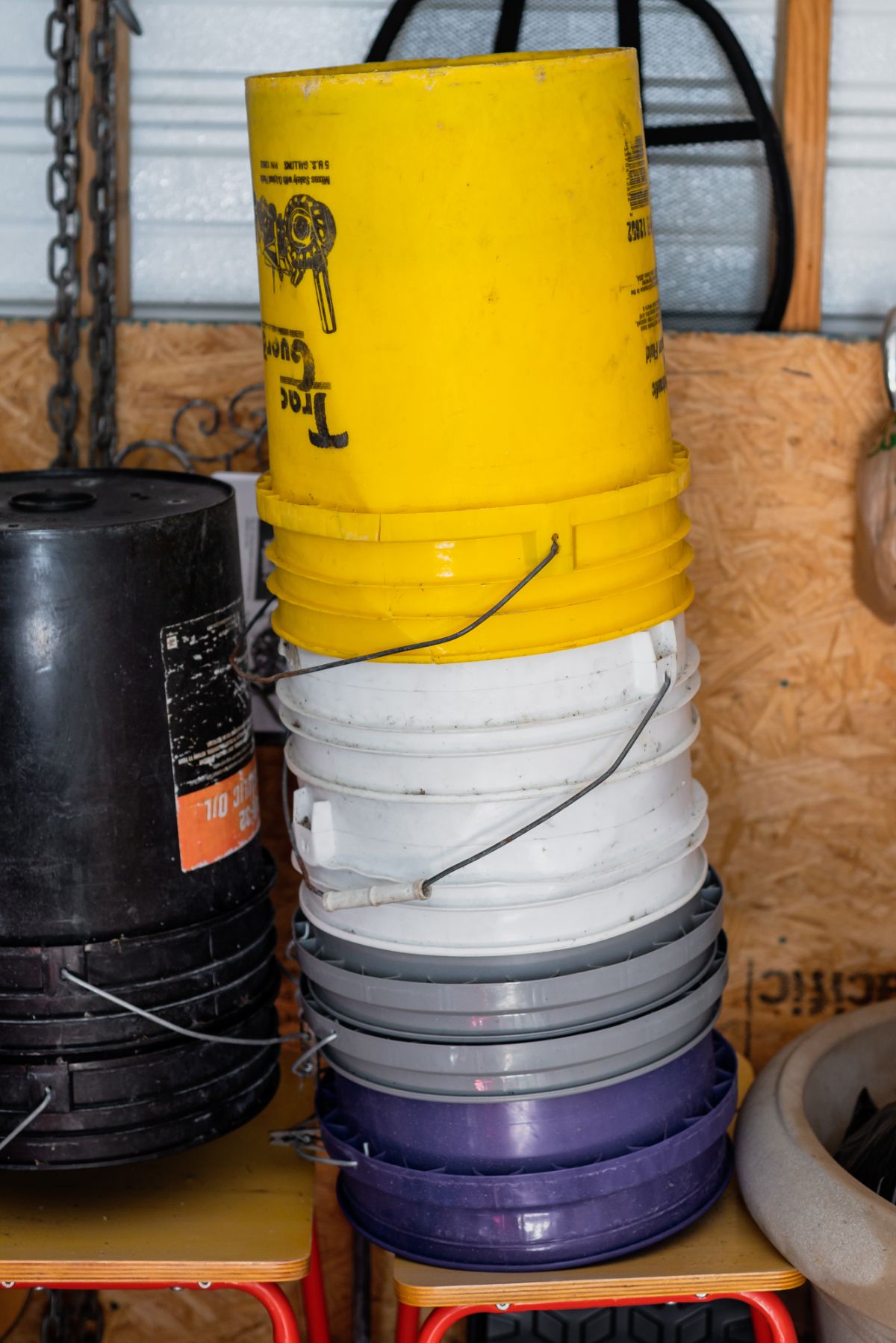
This brings up another question for people who are using five-gallon pails for gardening: Food grade or not food grade? Does it matter? How can you tell?
There are differing opinions as to whether food grade matters. Most people lean towards using food grade buckets for things that will grow or touch food. For planters, harvesters, and wash buckets, the best bet is to use food grade buckets that did not hold chemicals or inedible products.
For carryalls, trugs, and tool cleaning or storage and those sorts of uses, it doesn’t matter as much what kind of plastic it is.
If you’re not sure if your buckets are food-grade or not, there’s a simple way to tell. First, many of them will say “food grade” on the bottom. If they don’t, though, just look at the recycling numbers. (This is the number in the middle of the triangle of arrows).
Numbers 1, 2, 3, 4, 5, and 6 are food-grade and approved by the U.S. FDA. Number 7 plastics are combinations and can’t usually be recycled but should be safe for food and storage if you’re up-cycling.
Plastic buckets have lots of uses in the garden. We’ve given you our 19 favorite ways to use these handily up-cycled vessels. Do you have a tip, trick, or use to share? Let us hear it in the comments!

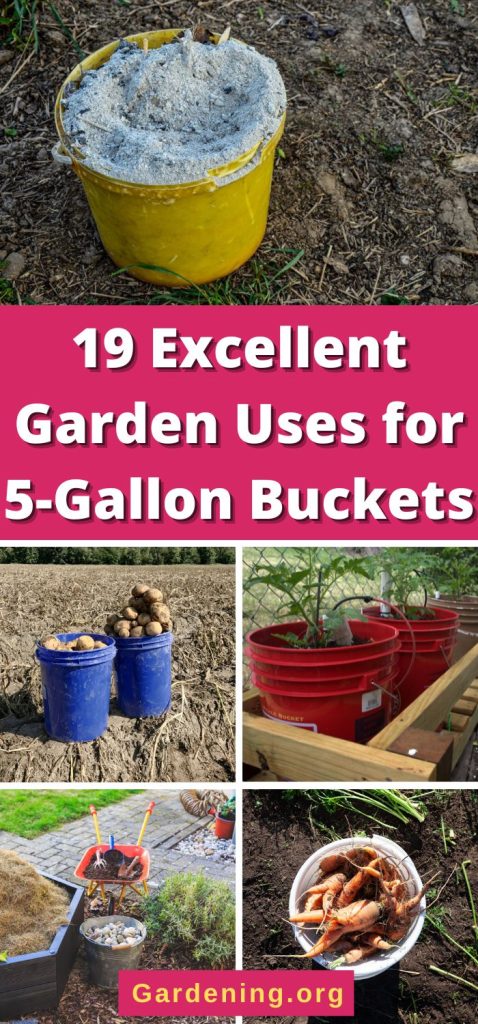

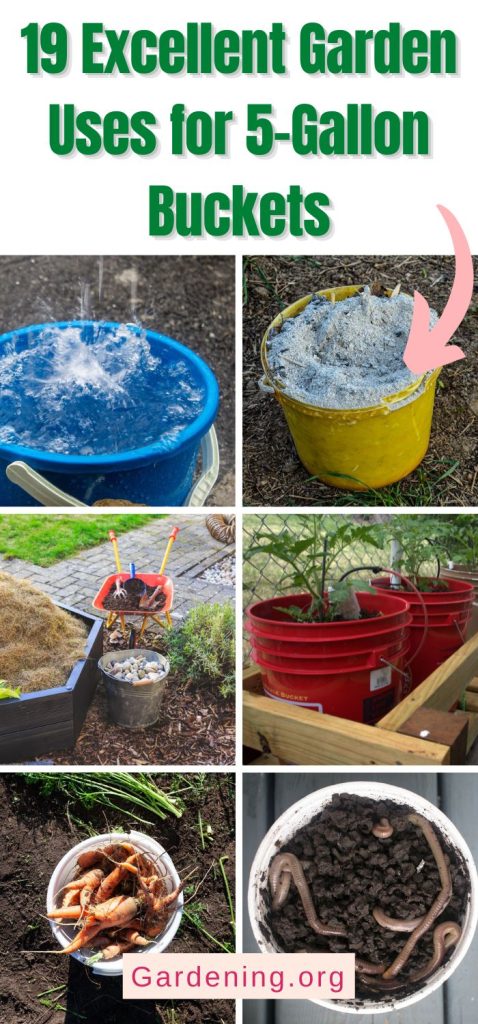
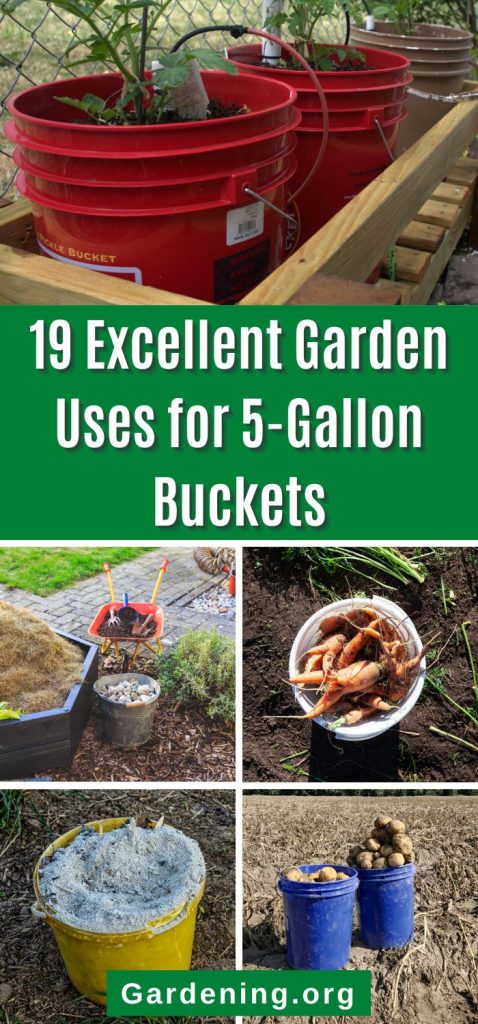
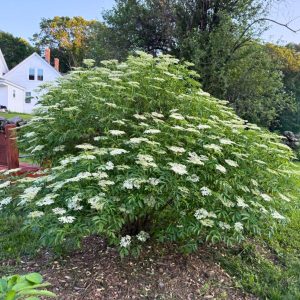
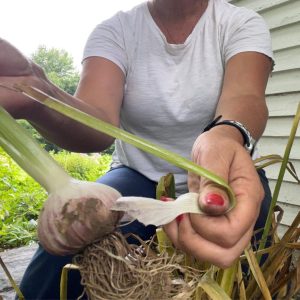


Debra christenson
I also used them in the garden to cover new plants when I heard it was going to freeze overnight.
Mary Ward
Another EXCELLENT use! Thanks for sharing!
Luke e
I don’t like ur number 8 without the other side to the story as leaving weeds is very beneficial for nutrients in the garden they feed bees which are on a decline and they save u buying expensive mulch as they bring nutrient up and hold the top soil together and retain water there is even a theory on growing with weeds and getting bigger better crops u need more research
Mary Ward
There are reasons to support both sides. Thank you for sharing your opinion. Much would depend on the crop, the size of it, and its ability to compete for light and resources. There is a lot of research and advice that recommends removing weeds to be composted to prevent housing insects, small animals, etc. Compost makes a valuable top-notch amendment for anywhere it's needed. For those gardeners who prefer a cleaner gardenscape, using cheap buckets as trugs is a good option. I can say I've been trialing some of these methods over the past two years, and I'm finding the results to be mixed and very crop and goal-dependent.